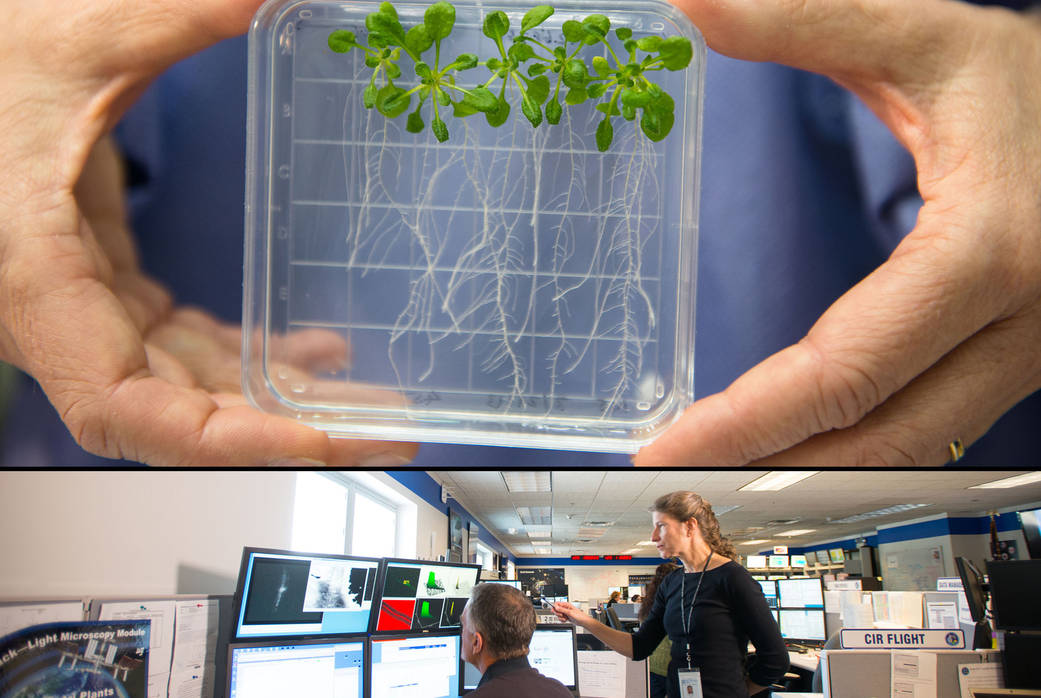Why do we need to study plants in space? Plants tell us a lot about how biology reacts to spaceflight. Moreover, when astronauts start traveling deeper and farther into space, they will need to grow plants for food. Plants also represent a source of oxygen while ingesting carbon dioxide in closed space environments.
CARA (Characterizing Arabidopsis Root Attractions) is an experiment just completed on the International Space Station (ISS), which looks at how the genes of plants, particularly those in the roots, adapt in a microgravity environment.
This experiment, designed by researchers at the University of Florida (UF) and imaged by the microscopy team at NASA Glenn, was sent up to the ISS on April 18. During the last month, plates holding Arabidopsis seedlings, like the ones shown in this image, were exposed to the ambient light of the ISS. Arabidopsis is the scientific name for this small plant that is also called thale cress or mouse ear cress. Glenn engineers operated the Light Microscopy Module with ground-based controls and obtained images of on board samples as researchers watched the plants grow and gathered data in real time.
UF investigators, Professors Anna-Lisa Paul and Robert Ferl, are pictured in NASA Glenn’s Telescience Support Center where the ISS experiment was monitored 24/7.
Image Credit: NASA
Bridget R. Caswell (Wyle Information Systems, LLC)
























